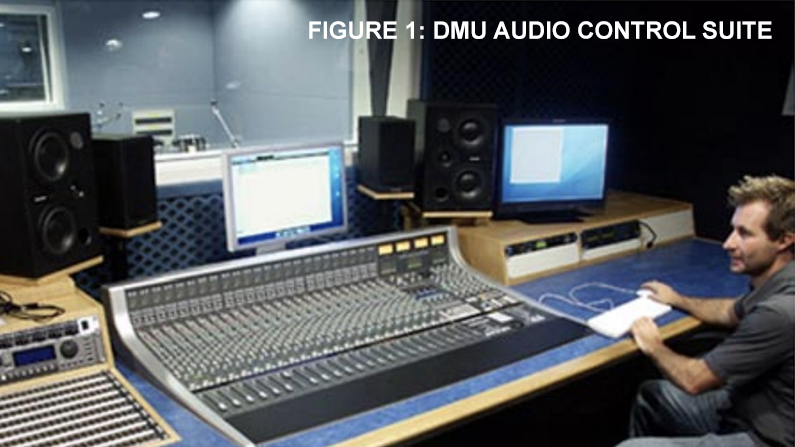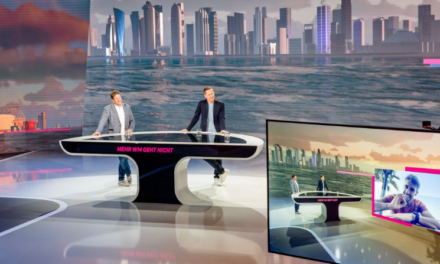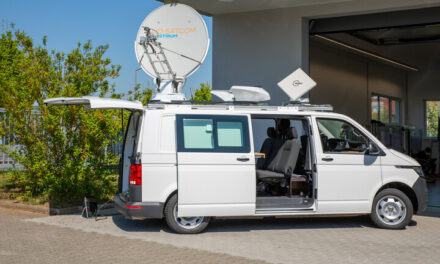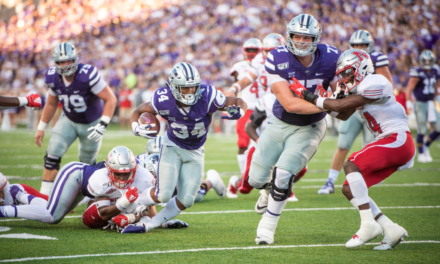by Paul Shonfeld, ATG Danmon
University-level education is widely acknowledged to be one of the most effective routes to a successful career, not least in the multimedia sector with its broad mix of technology and creativity. ATG Danmon has nearly three decades of experience in partnering with academic organisations to ensure their students have access to same the production tools that hey will be working with after graduation. This overview outlines some of the key factors involved in creating and sustaining a successful training environment. Based on actual projects, it demonstrates the extent to which courses can be focused on specific skills or widened to encompass a broad range of capabilities.
Staying ‘state-of-the-art’
A key challenge for educators is the need to stay state-of-the-art in an industry which is notoriously keen to expand its creative horizon. The key motivation is to deliver greater audience enjoyment in terms of sound quality, higher video resolution, wider dynamic range, greater colour accuracy and easier connectivity. Keeping up to date with these advances can be an expensive challenge unless systems are designed from the start to allow easy modernisation. We have the knowledge needed to design, build and support creative media solutions which are both futureproof and affordable.
Teamwork
Central to the success of any educational training equipment project is the need to ensure any proposed investment meets the approval of every lecturer involved. Differences of opinion can be resolved by collective discussion even if that means supporting several options, giving students the opportunity to gain experience with more than one technology. Notable examples are the multiplicity of vendors offering what at first sight seem similar studio production tools and post-production systems, plus the accelerating use of internet-linked services. It is essential to ensure that all interested parties are consulted before specific solutions are recommended. The resultant mix of equipment, software and cloudware needs to be made as futureproof as possible. ATG Danmon’s skill and experience have been proved by many successful projects over the years for universities and across the wider broadcast industry.
DMU Creative Technology Studios
British universities have a long tradition of supporting advanced technology, both in product development and student training. ATG Danmon (www.atgdanmon.co.uk) was commissioned to build one of the most up-to-date recording and broadcast studio facilities in the country, located within the Faculty of Computing Sciences & Engineering at De Montfort University in Leicester. The objective was to create a facility which accurately reflected a modern production house, including HD and SD editing, networked online and archiving servers, file-based workflow and media asset management.
Designated the Creative Technology Studios, the facility incorporates a large media store enabling collaborative projects to be undertaken with project data accessible from any machine within the facility.
“The CTS project encompassed the installation, configuring and commissioning of a large multidefinition video production facility, technical control room, dedicated video and audio analysis laboratories, two sound studios, four self-op radio studios, a radio control room, plus a highly advanced virtual-reality and fused-media laboratory. Three media production classrooms were also equipped, one housing 21 workstations to give students experience in using the latest HD video and audio production software. Each of the other two media-production classrooms accommodates eight workstations, one dedicated to Mac-based audio and video production, and the other providing experience of comparable PC-based software. Installation was completed in just over two months prior to the commencement of the academic year.
Figure 1 shows the audio control suite
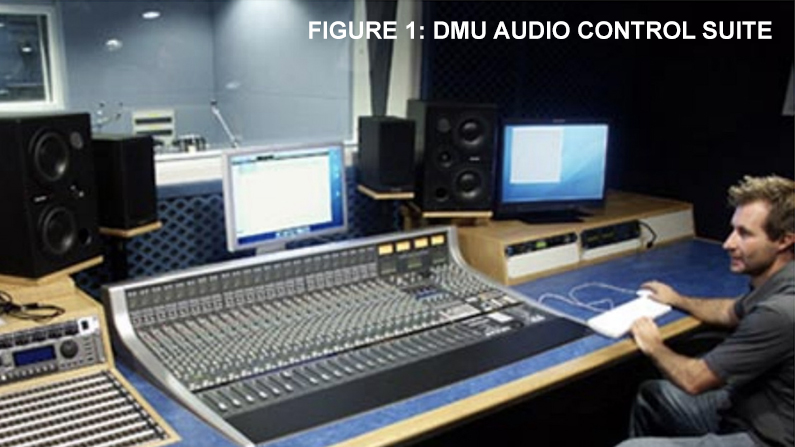
Figure 2 the radio presentation suite
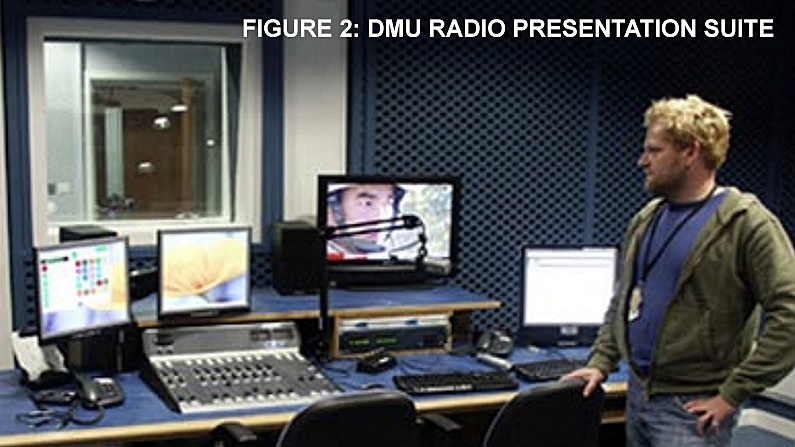
Figure 3 the central apparatus area.
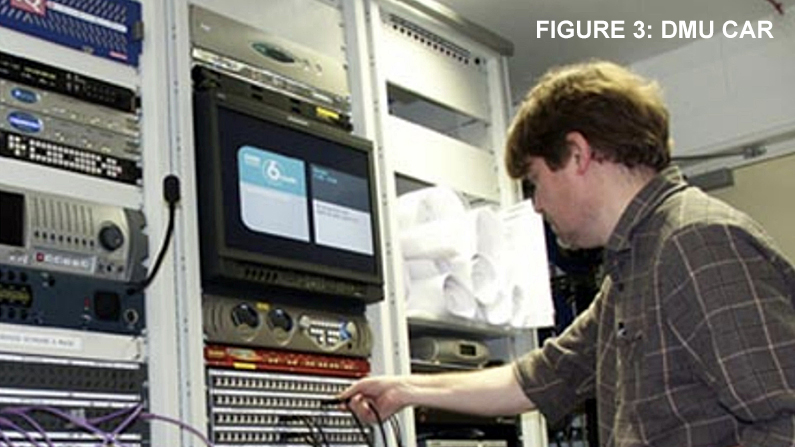
ATG Danmon also equipped the CTS to provide research facilities and courses in 3D motion capture, gaze-tracking, pressure-sensing virtual-reality and stereoscopic imaging.
In addition to offering leading-edge technology, the De Montfort University’s Creative Technology Studios provide students with real world experience of how things are done in the workplace. They also support research activities to ensure the university’s staff and courses remain at the forefront of developments in the creative industries.
System Relocation for UWE
The University of the West of England’s Bristol Bower Ashton site, part of City Campus, houses broadcast-standard production and post-production facilities for film-making, animation and photography. ATG Danmon was chosen to relocate the facilities from a former site. A key element of thsi project was the need for flexibility in timing. We were able to mobilise a team to deconstruct and remove all the studio infrastructure and control room furniture within the nine days available before the old building was demolished. Reinstating the system was achieved within four weeks while the new building was still being constructed. This again required very careful management as it was vital that everything was completed by the start of the new term. We also took great care to ensure all equipment was fully protected against dust ingress.
Facilities relocated include a three-camera studio, production control room (Figure 4), sound control room, two audio dubbing suites, two video grading suites and a Foley area. New cabling was largely prefabricated at our Letchworth headquarters to cut down onsite time, using new documentation which we created from UWE’s wiring drawings of the former site. Some additional equipment was also provided and integrated, including SDI to HDMI interfaces. The building is now open for use by all students based on the City Campus, including journalism, fine art, illustration and graphic design students.
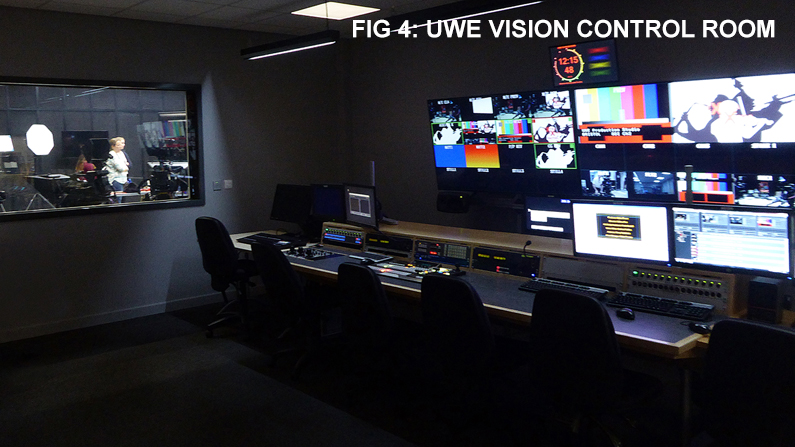
News Studio Systems for Cardiff University
This commission encompassed a full broadcast-quality news studio facility for Cardiff University’s School of Journalism, Media and Cultural Studies. It is used to train the next generation of television, radio, online and printed-media journalists. We were invited to propose a turnkey solution based on an outline specification provided by the university. The project comprised a main TV studio and dedicated gallery, a smaller TV studio with its associated gallery, plus a broadcast newsroom. Figure 5 shows the main studio during construction. The system links to a news presentation suite where a remotely controlled camera and two-way video feed allow the newsreader to talk to a newsroom reporter. The systems simulate the functionality and processes of a real broadcast environment, the output being used for academic review. Systems designed and installed for the large studio and gallery include studio lighting under control from a DMX console, gallery furniture, vision and audio monitoring with large multiscreen displays, two-way gallery/studio communications, wireless presenter talkback and teleprompt. Training in the operation and maintenance of the systems was provided on completion of the project.
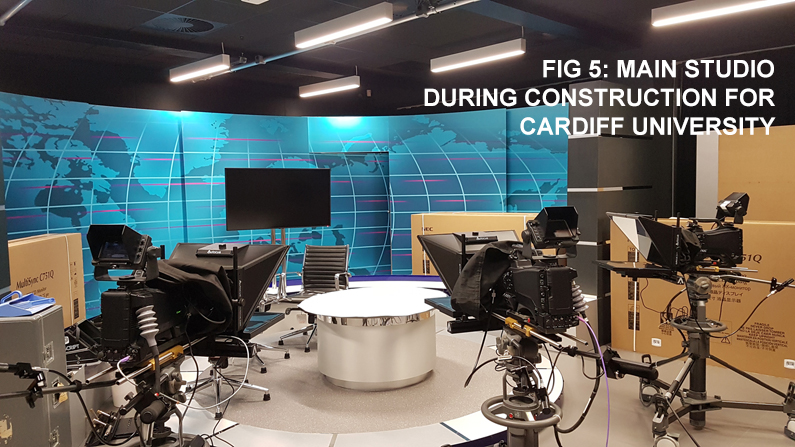
MMU School of Digital Arts
Manchester Metropolitan University’s School of Digital Arts (MMU SODA) chose ATG Danmon to equip its new School of Digital Arts. The project tender was issued in two phases. Phase 1 centred on the installation of cabling and interfaces, lighting control and related infrastructure. The university gave us very clear guidance at every stage of the project, from initial design specification right through to completion. The result is a comprehensive resource which allows undergraduates, postgraduates and researchers to get to gain experience with the tools and technology deployed across the broadcast, film and wider media industry. Following successful completion of MMU SODA phase 1, we were awarded the tender for the much larger Phase 2. This included the design, installation and commissioning of two motion-capture studios, two green-screen studios, a stop-motion studio, film studio, edit suites, a multipurpose studio, a colour grading and editing system and related audio/video equipment. Figure 6 shows one of the media study suites.
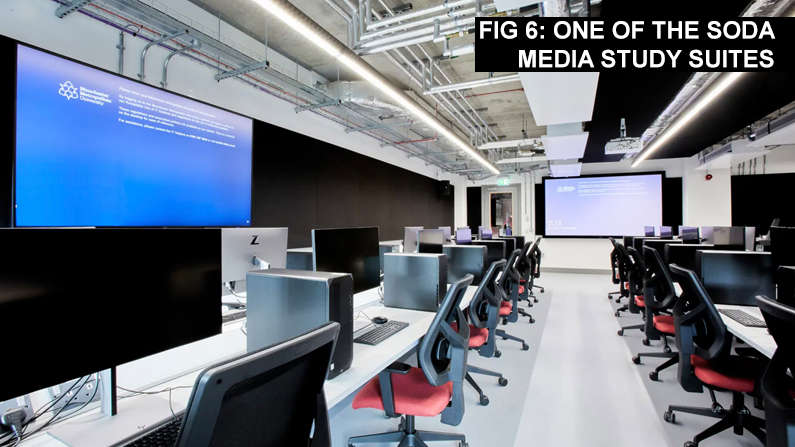
UEL virtual TV studio set and lighting system
UEL’s media studies campus delivers courses that include film, fine art and media, digital arts and communications, games design and animation, music, theatre and dance, creative writing, cultural and heritage studies, journalism, advertising and performing arts. We were commissioned to design and build a virtual TV studio set and lighting system that will form part of a Media and Journalism teaching suite. Created in partnership with the university’s media training team, it forms an addition to the television and radio training hub which we completed on the same campus. Equipped to full modern broadcast standards, the virtual studio (Figure 7) includes a control room with all the equipment needed to gain experience in green-screen-based programme production.
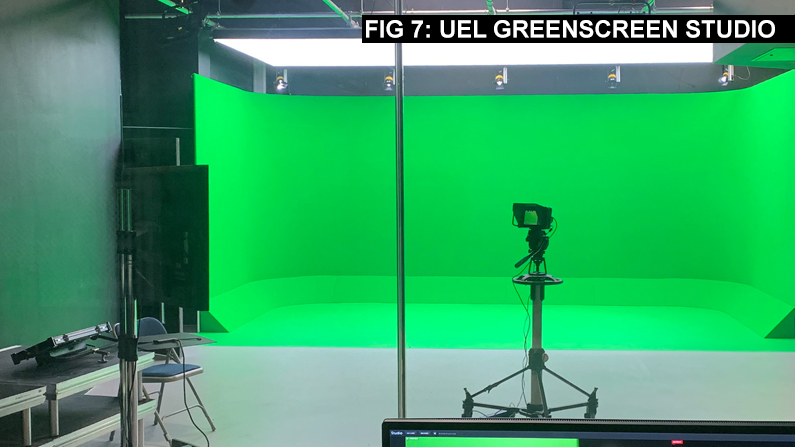
The virtual studio has a dedicated control room including a UHD vision mixer capable of sourcing from up to 16 cameras. The cameras in this case are a combination of traditional-style manually operated models and compact remotely controlled pan/tilt/zoom units. Audio production centres on a digital mixer capable of sourcing from 64 MADI channels over fibre or 16 audio-over-IP Ethernet channels. We have gained a great deal of experience in virtual set building over the years. Wall to floor transitions need especially careful configuration to ensure that the camera-sourced and electronically superimposed elements are visually seamless throughout a production. Figure 8 shows part of the radio training hub.
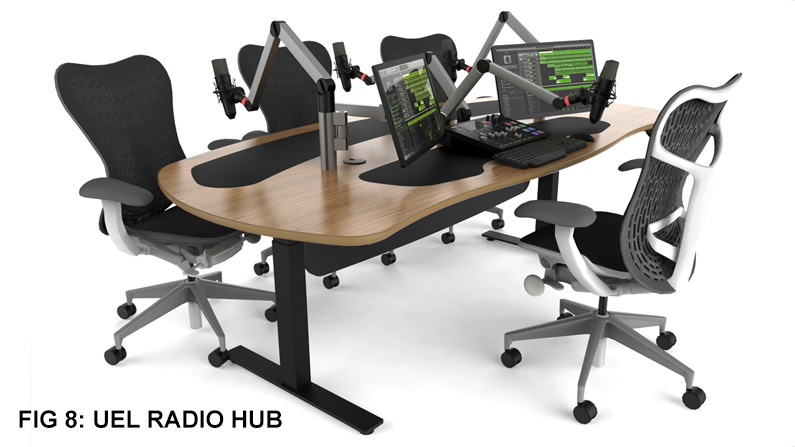
Lighting was an important part of the project as it essential that students understand the various light sources they will be working with to ensure that presenters and studio furnishings are clearly separated from the virtual imagery. We recommended and installed a versatile lighting system comprising key and fill luminaires, back lights, a large soft light, pantographs and a supporting grid. We also provided and integrated an operator-friendly and cost-efficient console to control the dimmer lights and LED colour mixing fixtures. The console incorporates a large touchscreen control surface with a smartphone-style interface for setup, programming and playback.
30 years strong
Part of the Danmon Group, ATG Danmon (www.atgdanmon.co.uk) is an international systems integrator and a world-class supplier of broadcast systems planning, design, installation and commissioning services. Established in 1993, the company has three decades of experience working for a wide range of media-related customers including some of the world’s largest television and multimedia networks. ATG Danmon is also active in the educational and corporate sectors. We have partnered with many clients in the construction of IT-based automated file workflow systems, high-definition studios, master control rooms and playout facilities, as well as the upgrade of existing SD systems to HD and UHD. With offices in Asia, Denmark, Germany, Norway, Portugal, Spain, Sweden and the United Kingdom, the Danmon Group (www.danmon.com) thinks globally and acts locally to support customers with its highly experienced sales and engineering teams.
This feature was originally published on 11/01/2024 on the Global Broadcast Industry News site at this link.

